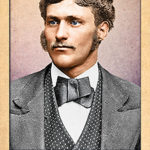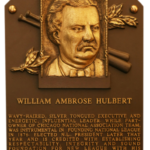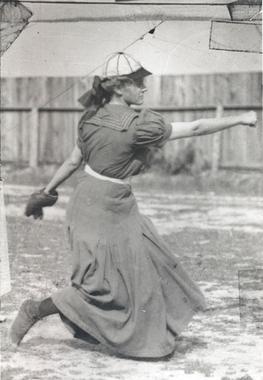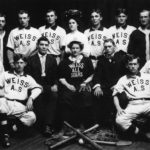At the conclusion of 1875, the organization was known as the National Association of Professional Base Ball Players (also known as NA) disbanded as it was known as a conglomerate of drunken players, rowdy men, corrupt and mismanaged businessmen and under the influence of gambling. But the fact remains that after five seasons, they ran out of money.
A Chicago businessman, William Hulbert, began the process of forming the National League of Professional Base Ball Clubs (also known as NL) on February 2, 1876. He was the owner of the Chicago White Stockings, which were also known as the Chicag0 Cubs. He put together some new rules that any team that wished to join must have at least 75,000 people or more. He set up the league with eight teams and each team between April 22 and October 21 would play seventy games.
Who Is William Hulbert?
He was born on October 23, 1832, in Burlington Falls, New York and at the age of two years, his family moved to Chicago. That would be his home for his entire life except for the period of time when he attended Beloit College. His in-laws had a very successful grocery business and he expanded the business into the coal trade. It was from this that he became a very rich person. He became involved in 1874 with the Chicago White Stockings when he became an officer on the Board of Directors.
There would be eight teams in the National League which included the Chicago White Stockings, Hartford Dark Blues, St. Louis Brown Stockings, Boston Red Caps, Louisville Grays, New York Mutuals, Philadelphia Athletics, and the Cincinnati Reds. Ten days after the formation (February 12), Chicago was the first to announce that they had signed Albert Spalding as a player on their team. Shortly after that, Spalding announced he would start a sporting goods store in Chicago and called it Spaldings.
On April 22, 1876, the first National League game was played and the Philadelphia Athletics were victorious over the Boston Red Caps 6-5. In that game. Joe Borden was the winning pitcher and the first base hit of the league went to Jim o’Rourke. Pitcher Albert Spalding threw the first shoutout on April 25th as Chicago won 4-0 over Louisville. It was a doubleheader and Spalding tossed another shutout in game two.
The first National League home run was an inside-the-park homer on May 2nd from Ross Barnes of the White Stockings. The game was against the Cincinnati team and the pitcher that allowed the first home run was Cherokee Fisher. There was a triple play on May 13 as the Hartford club pulled it off the Hartford Dark Blues. Also in May, the first tied happened on the 25th of the month between the Louisville Grays and the Philadelphia Athletics.
The first cry of cheating came on May 30, 1876, when the right fielder for Louisville, George Bechtel, made three of the teams nine errors. He was asked to resign when officials found a wire dated a few weeks later that he sent which mentions conspiring to lose and solidify his winning bet. The team kicked him off the team after he refused to quit. (Bechtel’s Wikipedia page)
With two months in the books, some events that took place in June include George Hall of the Athletics hitting two home runs in the same game as his team defeated the Reds 23-15. Davy Force has six hits in six at-bats on June 17 to lead his team to a 14-13 win over Chicago and Albert Spalding.
 The first no-hitter was in the books on July 15, 1876, when George Bradley of the St. Louis Brown Stockings won 2-0 at St. Louis Grand Avenue Park over the Hartford Dark Blues. Cal McVey of the White Stocking garners six hits in a game which now totals 15 hits in three games, and 18 hits in four games which tie his own record.
The first no-hitter was in the books on July 15, 1876, when George Bradley of the St. Louis Brown Stockings won 2-0 at St. Louis Grand Avenue Park over the Hartford Dark Blues. Cal McVey of the White Stocking garners six hits in a game which now totals 15 hits in three games, and 18 hits in four games which tie his own record.
On August 22 with the game tied, a St. Louis hitter smacks the ball down the third base line and hits one of his teammates. The umpire rules the runner can score and Chicago makes a protest and leaves the field. Now the umpire rules the Brown Stocking the winner of the game.
On September 11, 1876, the Philadelphia Athletics quits the league due to financial concerns. Five days later, September 16, the New York Mutuals do the same thing and inform the league they will not travel west for the final trip of the year due to financial constraints.
The Chicago White Stockings clinch the pennant on September 26 with a 7-6 win over Hartford. They finish the year with 52 wins and 14 losses. In the second place, the Hartford team is 47-21, followed by St. Louis at 45-19 and Boston with a 39-31 record. The other teams all finish under the .500 mark.
The Chicago Tribune published, on October 23, 1876, a section in their paper which included stats for the year. This is the first known instance of this happening. At the end of the year meeting on December 10, the New York team and Philadelphia squads are expelled for not finishing the season. Also, at that same meeting in Cleveland, William Hulbert was elected President of the National League.



